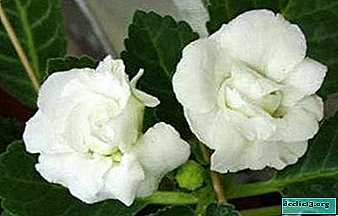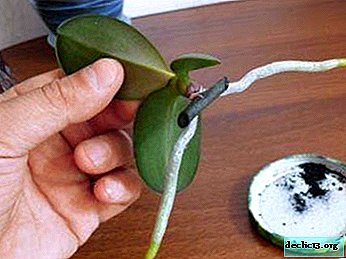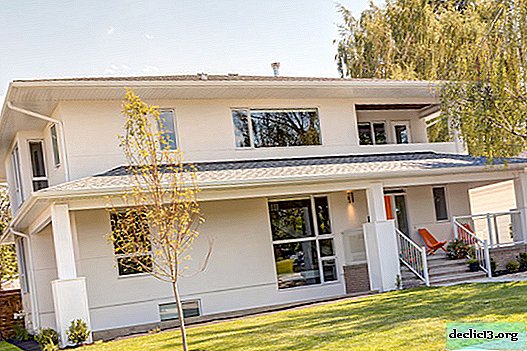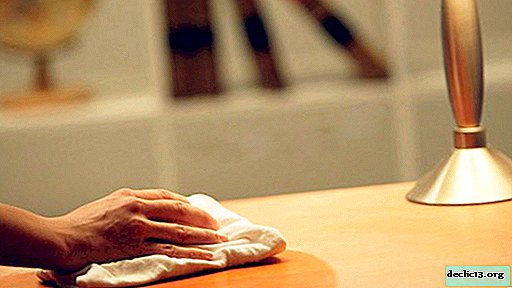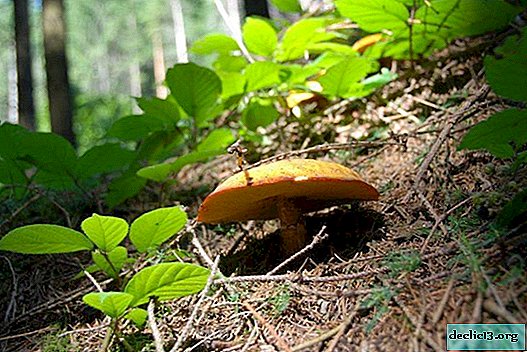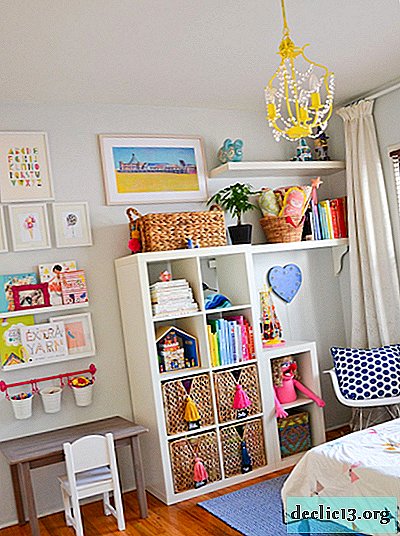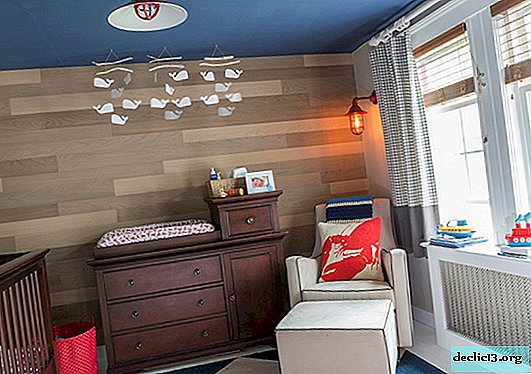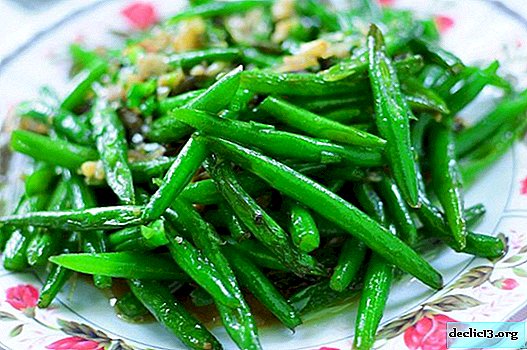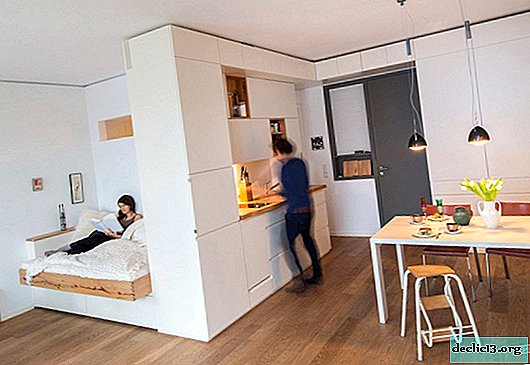An overview of the rose mix sub-varieties and care features. How to grow a flower at home?
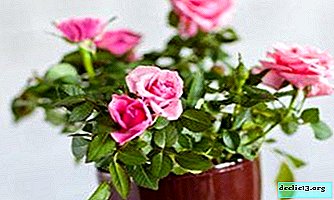
Especially popular among ornamental plants are roses. This attractive flower of amazing beauty from time immemorial attracts increased attention.
Few plants can compare with it in aroma, variety of shapes and colors, and the abundance and duration of flowering.
Like all roses, it is slightly capricious, but if you know the subtleties of caring for it, then it will not be difficult for any gardener, even a beginner, to grow a bush that will delight with its lush and plentiful flowering for a long time.
Botanical Description
Rosa mix is a selective plant variety belonging to the family of rosaceae of the Rosehip genus, which was bred specifically for cultivation at home. In fact, home rose - a miniature copy of a garden rose.
Features
The rose is distinguished by its remontability - the ability to repeatedly and continuously bloom. All roses of this variety are small in size: miniature (30-50 cm) or patio (50-65 cm) and a wide variety of colors.
Reference! Hybrid varieties are bred taking into account various climatic and soil conditions, so experienced gardeners manage to grow a flower not only on the windowsill, but also in their gardens.Each subgroup and sub-mix of roses mix is based on certain varieties of roses; we can say that the mix is a cloned miniature rose.
Pros and cons of growing a house
The most important advantage is that rose flowers will delight their host almost all year round.
The main disadvantages include time spent and patience in the growing process. Decorative home rose is very sensitive and capricious and depending on the season, care requirements change.
Brief History of Origin
Certain varieties of home roses were brought to Europe from Southeast Asia in the early 19th century. However, on an industrial scale, it is grown recently, thanks to the merits of the Dutch breeders.
Podsorta flower and photos with them
Next, consider the sub-plants and see how they look in the photo.
Parade
Variety Parade is considered the most adapted room option. It blooms luxuriantly and for a long time (5-6 months) with a break in flowering for 2 months. Plant height - 40-45 cm.

Patio hit
A variation of the floribund group. By size, it belongs to roses as a patio - it has a stalk length of 50-55 cm. The flowers are large, of various shades. Long flowering, in place of a faded bud instantly a new rosette appears. There are varieties with bicolor and striped petals.

Mini
Dwarf variety group. It has a low stem (up to 40 cm), flowers can be both small and medium to large. Buds and leaves practically do not vary in size.

Learn more about the charming mini rose here.
Danica
A small bush, about 30 cm high., Flower sizes 3-5 cm. The buds have a variety of colors.

Step-by-step instructions for growing
- Landing. Some subspecies of rose mix are used in landscaping and grown in gardens. The best time to plant in the open ground is mid-spring.
- A site is selected that is most illuminated in the morning and evening, on which a hole is dug, about 50 cm in diameter.
- At the bottom of the pit, a drainage layer, sand and organic fertilizers are laid out.
- Then the seedling is placed in the hole and filled with a layer of soil.
- Immediately after planting, the rose is abundantly watered.
- Care. The plant is very sensitive, requires constant attention and knowledge of all the nuances of care.
How to care for a flower?
- A place - any window sill, except the northern one, is suitable for placing a rose mix. On the south side, the plant should be shaded with blinds or taped windows with paper to avoid exposure to direct sunlight.
- Temperature - in summer, the optimum temperature is + 18-23 ° C, in winter the plant goes into a dormant state and it is transferred to a cool place + 8-13 °. When overheating, the likelihood of rooting of the root system increases.
- Humidity - Good rose growth is possible with high and moderate humidity. Dry air is contraindicated in plants. During the heating season, systematically spray with warm water from the spray gun. Once a week, you can take a shower, after covering the soil with polyethylene.
- Lighting - The domestic rose is extremely photophilous, but is afraid of direct sunlight, it is shown diffused, but bright light. In winter, the plant needs to be illuminated with special fluorescent lamps.
 Watering - regular but moderate; during flowering and growth, watering is several times more plentiful than in autumn and winter. The flower is watered as the soil dries. Overfilling promotes soil acidification and slows plant growth. Water should be settled at room temperature.
Watering - regular but moderate; during flowering and growth, watering is several times more plentiful than in autumn and winter. The flower is watered as the soil dries. Overfilling promotes soil acidification and slows plant growth. Water should be settled at room temperature.- Top dressing - during the active growing season, along with watering, mineral fertilizers are applied weekly; in winter, top dressing is reduced to two times a month.
- Pruning - yellowed and dried leaves, old stems and wilted buds are removed. Before hibernation, stems are obligatory shortened to 10 cm; 3-5 buds are left on the branches. Pruning is carried out not only to give the bush a shape, but also contributes to an earlier and lush budding.
- Transfer - after the acquisition, it is not recommended to transplant immediately, you need to give time for adaptation - 10-14 days. The bush is transplanted after a period of adaptation and later on when the bush grows. Wooden and ceramic pots of the right size are best suited. The soil must be sufficiently nutritious, it is good to pass moisture and air, so the presence of drainage is a prerequisite for transplantation.
- Pest and Disease Prevention - For the season, several sprayings are carried out with a solution of Bordeaux fluid, with a solution of Actellik. Before wintering, a three percent solution of copper sulfate is used. When the first signs of disease are detected, the affected shoots are removed and burned, and the plant itself is sprayed with fungicide.
- Breeding - at home they resort mainly to cuttings. In the period from May to September, a stalk (10-15 cm) is cut from a faded shoot. The cutlery is placed in water for a day, before being displaced into the substrate, the slice is treated with a growth stimulator. For faster release of roots, the processes can be covered with banks to create a greenhouse effect. The first roots appear within 3 weeks.
Diseases and Pests
- Leaf spotting - a fungal disease that affects leaves with dark spots. It occurs in conditions of high humidity.
- Powdery mildew - A disease caused by frequent changes in temperature, in which the whole plant is affected by a whitish coating.
- Gray rot - manifests itself in a period of prolonged rains. The plant turns yellow, and its shoots, flowers and leaves fall off.
- Caterpillars - eat buds and leaves, lay the pupa in leaves twisted into a tube.
- Rose sawfly - the larvae penetrate into the shoots, as a result of which young stems die.
- Spider mite - the leaves are covered with a whitish coating and a spider web.
Mistakes in leaving
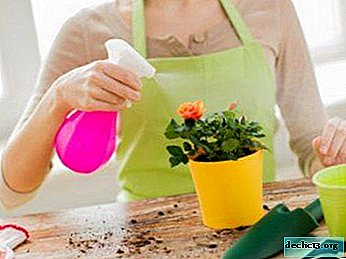 Excessive lighting - in the daytime, the rose should be shaded, otherwise the risk of burning out the sheets is high. For non-compliance with the conditions, the bush must be rearranged or shaded.
Excessive lighting - in the daytime, the rose should be shaded, otherwise the risk of burning out the sheets is high. For non-compliance with the conditions, the bush must be rearranged or shaded.- Lack of light harms plant growth:
- leaves discolor;
- the stems are thinning;
- buds are fading;
- vulnerability to diseases increases.
The pot should be rearranged in a lighter place.
- Cold leads to stunted growth, the bush may freeze and dry. Avoid low temperatures and large temperature fluctuations.
- Planting in acidic or alkaline soil does not allow the plant to absorb nutrients and water. Shoots lengthen and thin, buds fall. Plant transplantation into a more suitable neutral soil is shown.
- Too plentiful watering leads to the decay of the roots, then the entire bush, which can no longer be saved.
- With insufficient watering, the bush dries. To resuscitate the plant, a groove (10-15 cm deep) is dug around the bush and filled with water.
- Excessive feeding will cause root burns - the stems soften and few flowers form. If fertilizer application is not suspended, the bush may die.
- With malnutrition, the roots lag behind in development and the leaves acquire a reddish-purple tint.
Rose is the finest of flowers, which, thanks to the efforts of botanists and breeders, is now possible to grow at home. Rosa mix has many varieties and varieties for every most sophisticated taste, repeating in miniature garden fellow.

 Watering - regular but moderate; during flowering and growth, watering is several times more plentiful than in autumn and winter. The flower is watered as the soil dries. Overfilling promotes soil acidification and slows plant growth. Water should be settled at room temperature.
Watering - regular but moderate; during flowering and growth, watering is several times more plentiful than in autumn and winter. The flower is watered as the soil dries. Overfilling promotes soil acidification and slows plant growth. Water should be settled at room temperature. Excessive lighting - in the daytime, the rose should be shaded, otherwise the risk of burning out the sheets is high. For non-compliance with the conditions, the bush must be rearranged or shaded.
Excessive lighting - in the daytime, the rose should be shaded, otherwise the risk of burning out the sheets is high. For non-compliance with the conditions, the bush must be rearranged or shaded.
